
A neurotransmitter is a signaling molecule secreted by a neuron to affect another cell across a synapse. The cell receiving the signal, or target cell, may be another neuron, but could also be a gland or muscle cell.

Psychopharmacology is the scientific study of the effects drugs have on mood, sensation, thinking, behavior, judgment and evaluation, and memory. It is distinguished from neuropsychopharmacology, which emphasizes the correlation between drug-induced changes in the functioning of cells in the nervous system and changes in consciousness and behavior.
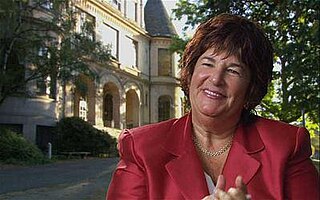
Candace Beebe Pert was an American neuroscientist and pharmacologist who discovered the opioid receptor, the cellular binding site for endorphins in the brain.
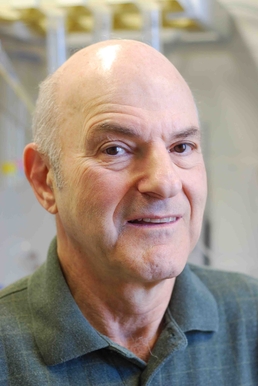
George K. Aghajanian was an American psychiatrist who was Emeritus Foundations Fund Professor at the Yale School of Medicine, New Haven, Connecticut, in the Department of Psychiatry. He was a pioneer in the area of neuropharmacology. He also served as a member of the NARSAD Scientific Advisory Board.

George F. Koob is a Professor and former Chair of the Committee on the Neurobiology of Addictive Disorders at the Scripps Research Institute and Adjunct Professor of Psychology, Psychiatry, and Skaggs School of Pharmacy and Pharmaceutical Sciences at the University of California, San Diego. In 2014 he became the director of the National Institute on Alcohol Abuse and Alcoholism.
Richard Lewis Huganir is a Bloomberg Distinguished Professor in the Departments of Neuroscience and Psychological and Brain Sciences, Director of the Solomon H. Snyder Department of Neuroscience, and co-director of the Johns Hopkins Medicine Brain Science Institute at the Johns Hopkins University School of Medicine. He has joint appointments in the Department of Biological Chemistry and the Department of Pharmacology and Molecular Sciences in the Johns Hopkins School of Medicine.
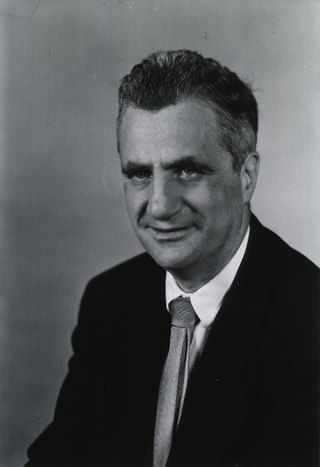
Bernard Beryl Brodie was a founding scientist in the area of biochemical and neurochemical pharmacology whose work in the 1940s and 1950s had great impact. He was a major figure in the fields of drug metabolism and drug therapy, studying how the absorption and interactions of drugs in the body. Brodie helped to found and lead the Laboratory of Chemical Pharmacology at the National Heart Institute in Bethesda, Maryland, one of the National Institutes of Health. He was a member of the United States National Academy of Sciences.
Erminio "Mimo" Costa was an Italian-American neuroscientist. His research interests covered brain serotonergic activity in health and disease, benzodiazepine-GABA interactions, benzodiazepine action at GABAA receptors, neurophysiological role of neurosteroids, and GABAergic dysfunction and changes in the expression of reelin and GAD67 in schizophrenia. He published more than 1,000 articles. The June 2011 issue of the journal Neuropharmacology was dedicated to him.

Jeffrey Alan Lieberman is an American psychiatrist who specializes in schizophrenia and related psychoses and their associated neuroscience (biology) and pharmacological treatment. He was principal investigator for CATIE, the largest and longest independent study ever funded by the United States National Institute of Mental Health to examine existing pharmacotherapies for schizophrenia. He was president of the American Psychiatric Association from May 2013 to May 2014.

Anne Buckingham Young is an American physician and neuroscientist who has made major contributions to the study of neurodegenerative diseases, with a focus on movement disorders like Huntington's disease and Parkinson's disease. Young completed her undergraduate studies at Vassar College and earned a dual MD/PhD from Johns Hopkins Medical School. She has held faculty positions at University of Michigan and Harvard University. She became the first female chief of service at Massachusetts General Hospital when she was appointed Chief of Neurology in 1991. She retired from this role and from clinical service in 2012. She is a member of many academic societies and has won numerous awards. Young is also the only person to have been president of both the international Society for Neuroscience and the American Neurological Association.
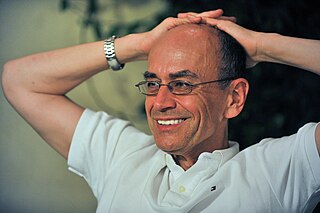
Thomas Christian Südhof, ForMemRS, is a German-American biochemist known for his study of synaptic transmission. Currently, he is a professor in the school of medicine in the department of molecular and cellular physiology, and by courtesy in neurology, and in psychiatry and behavioral sciences at Stanford University.
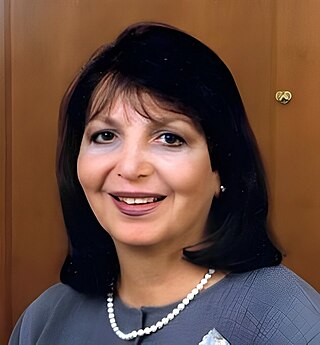
Huda Akil is a Syrian-American neuroscientist whose research has contributed to the understanding of the neurobiology of emotions, including pain, anxiety, depression, and substance abuse. Akil and her colleagues are best known for providing the first physiological evidence for a role of endorphins in the brain and demonstrating that endorphins are activated by stress and can cause pain inhibition.

A psychoactive drug, psychopharmaceutical, psychoactive agent, or psychotropic drug is a chemical substance that changes the function of the nervous system and results in alterations of perception, mood, cognition, and behavior. These substances may be used medically, recreationally, for spiritual reasons, or for research. Some categories of psychoactive drugs may be prescribed by physicians and other healthcare practitioners because of their therapeutic value.
Michael J. Kuhar, is an American neuroscientist, author, and Candler Professor of Neuropharmacology at The Emory National Primate Research Center of Emory University. He is a Georgia Research Alliance eminent scholar, and a senior fellow in the Center for Ethics at Emory. He was previously a professor at Johns Hopkins University School of Medicine and branchchief at the National Institute on Drug Abuse.
David S. Bredt is an American molecular neuroscientist.

Susan G. Amara is an American professor of neuroscience and is the Scientific Director of the National Institute of Mental Health. Dr. Amara is an elected member of the National Academy of Sciences and a fellow of the American Association for the Advancement of Science. She is a Past-President of the Society for Neuroscience. Dr. Amara has a B.S. in Biological Sciences from Stanford University and a Ph.D. in Physiology and Pharmacology from the University of California, San Diego.

Patricia Janak is a Bloomberg Distinguished Professor at Johns Hopkins University who studies the biological basis of behavior through associative learning. Janak applies this research to pathological behaviors, such as addiction and posttraumatic stress disorder, to improve understanding of how stimuli affect relapse and responses.
John Hughes is a British neuroscientist who shared the 1978 Albert Lasker Award for Basic Medical Research for the discovery of met-enkephalin and leu-enkephalin. This discovery demonstrated that opiate drugs exert their effects on the human brain by mimicking endogenous neurotransmitters, the opioid peptides.

Olivier Civelli is a molecular biologist, a researcher in the field of neuropharmacology and an educator. He is the Eric L. and Lila D. Nelson Professor of Neuropharmacology at University of California, Irvine. He is also a Professor in the Department of Developmental and Cell Biology at University of California, Irvine. He is most known for his work in advancing understanding of neurotransmission and his impact on drug discovery.
Joseph Thomas Coyle Jr. is an American psychiatrist and neuroscientist. He is the Eben S. Draper Professor of Psychiatry and Neuroscience at Harvard Medical School.














